
Barbara Stanwyck was an American actress, model and dancer. A stage, film, and television star, during her 60-year professional career she was known for her strong, realistic screen presence and versatility. She was a favorite of directors, including Cecil B. DeMille, Fritz Lang, and Frank Capra, and made 85 films in 38 years before turning to television.

Ninotchka is a 1939 American romantic comedy film made for Metro-Goldwyn-Mayer by producer and director Ernst Lubitsch and starring Greta Garbo and Melvyn Douglas. It was written by Billy Wilder, Charles Brackett, and Walter Reisch, based on a story by Melchior Lengyel. Ninotchka is Greta Garbo's first full comedy, and her penultimate film; she received her third and final Academy Award nomination for Best Actress. In 1990, Ninotchka was selected for preservation in the United States National Film Registry by the Library of Congress as being "culturally, historically, or aesthetically significant". In 2011, Time also included the film on the magazine's list of "All-Time 100 Movies".
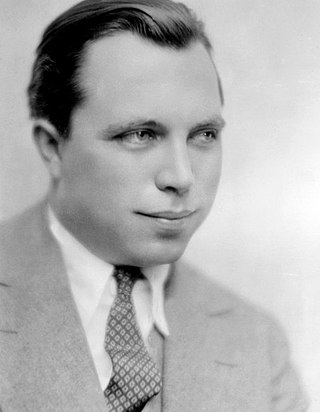
King Wallis Vidor was an American film director, film producer, and screenwriter whose 67-year film-making career successfully spanned the silent and sound eras. His works are distinguished by a vivid, humane, and sympathetic depiction of contemporary social issues. Considered an auteur director, Vidor approached multiple genres and allowed the subject matter to determine the style, often pressing the limits of film-making conventions.

Toshiro Mifune was a Japanese actor and producer. A winner of numerous awards and accolades over a lengthy career, Mifune is best known for starring in Akira Kurosawa's critically-acclaimed jidaigeki films such as Rashomon (1950), Seven Samurai (1954), Throne of Blood (1957), The Hidden Fortress (1958) and Yojimbo (1961). He also portrayed Miyamoto Musashi in Hiroshi Inagaki's Samurai Trilogy (1954–1956), Lord Toranaga in the NBC television miniseries Shōgun, and Admiral Isoroku Yamamoto in three different films. He is widely considered one of the greatest actors of all time.
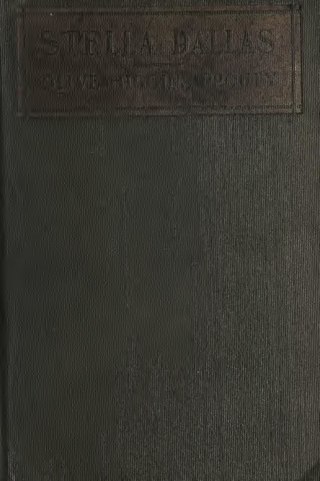
Stella Dallas is a 1923 novel by Olive Higgins Prouty and published by Houghton Mifflin, written in response to the death of her three-year-old daughter from encephalitis. It tells the story of the eponymous protagonist, a working-class woman who marries a rich businessman but struggles to adapt to her new life. After the marriage fails, she sacrifices her own happiness for the sake of her daughter.

Dreams is a 1990 magical realist anthology film of eight vignettes written and directed by Akira Kurosawa, starring Akira Terao, Martin Scorsese, Chishū Ryū, Mieko Harada and Mitsuko Baisho. It was inspired by actual recurring dreams that Kurosawa said he had repeatedly. It was his first film in 45 years in which he was the sole author of the screenplay. An international co-production of Japan and the United States, Dreams was made five years after Ran, with assistance from George Lucas and Steven Spielberg, and funded by Warner Bros. The film was screened out of competition at the 1990 Cannes Film Festival, and has consistently received positive reviews.
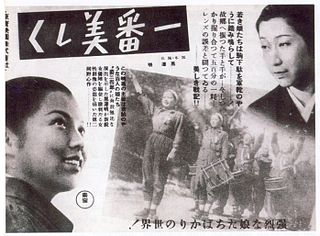
The Most Beautiful is a 1944 Japanese drama and propaganda film written and directed by Akira Kurosawa. The semidocumentary film follows a group of female volunteer workers at an optics factory during the Second World War, during which the film was produced.

No Regrets for Our Youth is a 1946 Japanese film written and directed by Akira Kurosawa. It is based on the 1933 Takigawa incident, and is considered a quintessential "democratization film", taking up many themes associated with social policy under the early Occupation of Japan.

A Streetcar Named Desire is a 1951 American Southern Gothic drama film adapted from Tennessee Williams's Pulitzer Prize-winning play of the same name. It is directed by Elia Kazan, and stars Vivien Leigh, Marlon Brando, Kim Hunter, and Karl Malden. The film tells the story of a Mississippi Southern belle, Blanche DuBois, who, after encountering a series of personal losses, seeks refuge with her sister and brother-in-law in a dilapidated New Orleans apartment building. The original Broadway production and cast was converted to film, albeit with several changes and sanitizations related to censorship.
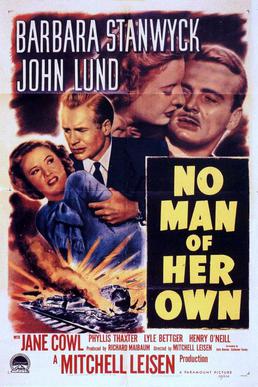
No Man of Her Own is a 1950 American film noir drama directed by Mitchell Leisen and featuring Barbara Stanwyck, John Lund, Phyllis Thaxter, Jane Cowl and Lyle Bettger. The production is the second film Stanwyck made with director Mitchell Leisen. Its screenplay was adapted from Cornell Woolrich's 1948 novel I Married a Dead Man. Woolrich is cited in the film's opening credits by one of his commonly used pseudonyms, "William Irish".
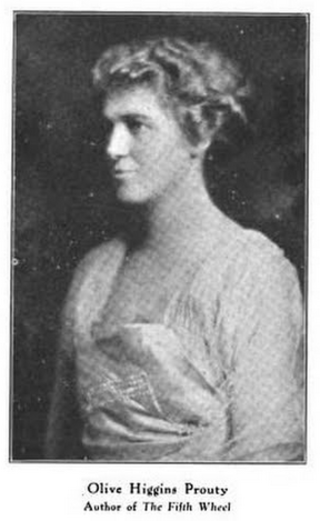
Olive Higgins Prouty was an American novelist and poet, best known for her 1923 novel Stella Dallas and her pioneering consideration of psychotherapy in her 1941 novel Now, Voyager.
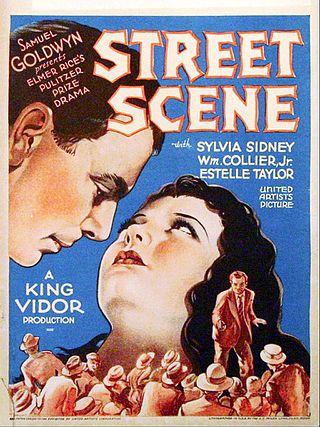
Street Scene is a 1931 American pre-Code drama film produced by Samuel Goldwyn and directed by King Vidor. With a screenplay by Elmer Rice adapted from his Pulitzer Prize-winning play of the same name, Street Scene takes place on a New York City street from one evening until the following afternoon. Except for one scene which takes place inside a taxi, Vidor shot the entire film on a single set depicting half a city block of house fronts.

Stella is a 1990 American drama film produced by The Samuel Goldwyn Company and released by Touchstone Pictures. The screenplay by Robert Getchell is the third feature film adaptation of the 1923 novel Stella Dallas by Olive Higgins Prouty. Previous film versions were Stella Dallas (1937) and the silent film Stella Dallas (1925).
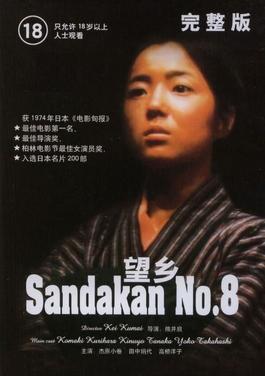
Sandakan No. 8 is a 1974 Japanese drama film directed by Kei Kumai, starring Yoko Takahashi, Komaki Kurihara and Kinuyo Tanaka. It was nominated for the 1975 Academy Award for Best Foreign Language Film. It also became one of the highest-grossing Japanese films at the Chinese box office, where it generated box office admissions in the hundreds of millions.
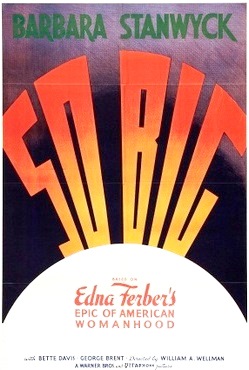
So Big is a 1932 pre-Code American drama film directed by William A. Wellman and starring Barbara Stanwyck. The screenplay by J. Grubb Alexander and Robert Lord is based on the 1924 Pulitzer Prize-winning novel of the same name, by Edna Ferber.

Stella Dallas is a 1925 American silent drama film that was produced by Samuel Goldwyn, adapted by Frances Marion, and directed by Henry King. The film stars Ronald Colman, Belle Bennett, Lois Moran, Alice Joyce, Jean Hersholt, and Douglas Fairbanks Jr. Prints of the film survive in several film archives.

Stella Dallas was an America radio soap opera that ran from October 25, 1937, to December 23, 1955. The New York Times described the title character as "the beautiful daughter of an impoverished farmhand who had married above her station in life."
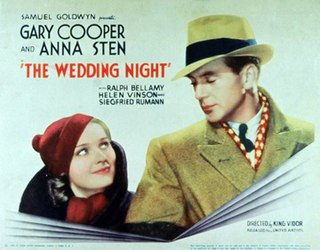
The Wedding Night is a 1935 American romantic drama film directed by King Vidor and starring Gary Cooper and Anna Sten. Written by Edith Fitzgerald and based on a story by Edwin H. Knopf, the film is about a financially strapped novelist who returns to his country home in Connecticut looking for inspiration for his next novel and becomes involved with a beautiful young Polish woman and her family. The film was produced by Samuel Goldwyn and filmed at Samuel Goldwyn Studios from early November to early December 1934. It was released in the United States on March 8, 1935.

Her Brother is a 1960 Japanese drama film directed by Kon Ichikawa. It is based on the novel Otōto by Aya Koda.

His Brother's Wife is a 1936 American romantic drama film directed by W. S. Van Dyke and starring Barbara Stanwyck and Robert Taylor. Written by Leon Gordon and John Meehan, based on a story by George Auerbach, the film is about a scientist preparing to leave for the jungles of South America to work on a cure for spotted fever. Wanting to have some fun before his trip, he goes to a gambling club where he meets and falls in love with a beautiful model while falling deep into debt. When he turns to his brother for help, his brother agrees to cover the debt, but only if he leaves without her. While the scientist is away, his brother and the model get married.




















